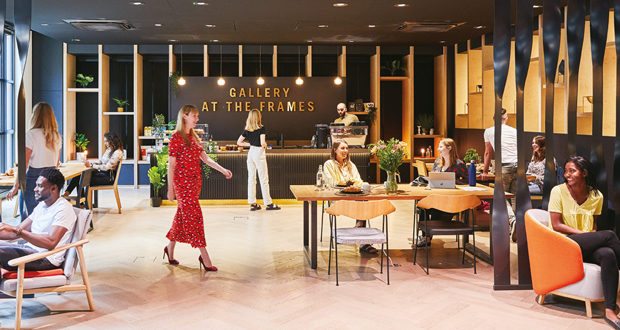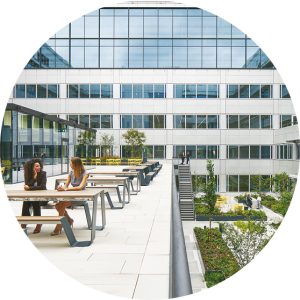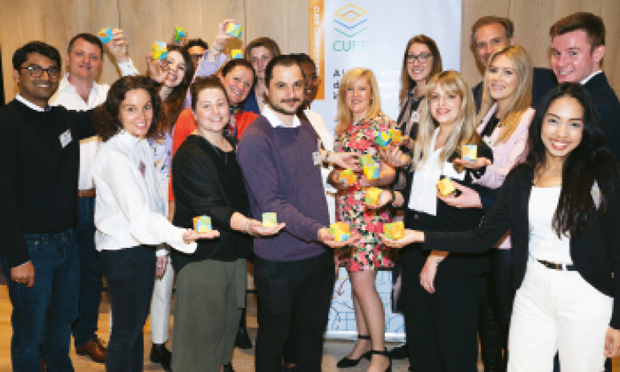 With the majority of emissions coming from existing, inefficient buildings, the built environment needs a change in behaviours to help meet net zero targets, says Mark Bruno, a Partner with Ampers and Partners and Chief Ambassador for the CUBE Competition
With the majority of emissions coming from existing, inefficient buildings, the built environment needs a change in behaviours to help meet net zero targets, says Mark Bruno, a Partner with Ampers and Partners and Chief Ambassador for the CUBE Competition
The year on everyone’s mind is 2030 and there is arguably nowhere that this is more keenly felt than in the real estate sector. Not only is it the year set by many corporates for their near-term net zero targets, it also requires significant cuts – up to 50 per cent in some cases(i)– to the energy consumed across their assets. Contributing to 39 per cent of global emissions(ii), the built environment sector needs to play a central part in tackling climate change.
However, transforming businesses towards a more sustainable model takes time. No good transformation happens overnight because it requires changing the hearts and minds of various people within an organisation. The commercial real estate sector already grapples with innovating in a timely manner, and net zero presents a fundamentally new challenge in terms of the scale and pace of action required.
The recent IPCC report warns that at current implied emissions, it is likely that by 2030 warming will exceed 1.5C and it will be harder to limit warming below 2C (iii), making it even more important to front load action now – especially for the real estate sector. Worryingly, the Alliance for Buildings and Construction (GlobalABC) also reported that the gap between carbon performance in buildings and the 2050 decarbonisation pathway is actually widening(iv.)
The climate crisis and ESG are starting to top the agendas of many businesses, driving the adoption of sustainability credentials by new real estate developments and becoming a deciding factor for tenants in the choice of new premises. This is further influenced by an increasingly enlightened and active workforce who require their employers to be more sustainable and make a positive contribution to society. For example looking at the Social aspect of ESG, greener spaces have been shown to increase productivity and reduce medical costs(v) through improving air quality, enhancing natural light and introducing greenery. The justification for driving sustainability in commercial buildings, therefore, goes beyond moral responsibility and more towards preserving and creating business value.
While needed, focusing attention solely on the handful of new net zero buildings being developed distracts from the larger problem at hand: the majority of emissions are leaking from a large stock of existing, inefficient buildings. Given that we have a collective responsibility to meet net zero targets, what should owners, property managers, FM teams and tenants be considering to help drive this at a building level?
The solution begins with behaviour change achieved through various strategies, the first being clearly demonstrating the power of collective action. If everyone was to change their wasteful and inefficient habits to more sustainable ones, the collective impact of these changes, even if seemingly small on an individual or building basis, will amount to a huge impact. An initiative called the CUBE Competition launched in France six years ago together with leading real estate actors, property managers and technical supporters, leverages gamification to rally thousands of building users across France to reduce energy wastage in commercial buildings. Through behaviour change and minor technical reprogramming, the participants have collectively managed to make significant savings, reducing their energy use by up to 55 per cent in a single year.
Given that, on average, commercial buildings waste 30 per cent of their energy this not only equates to unnecessary carbon emissions but also represents a significant cost at the same time. To put a positive spin on this, it also shows just how much low-hanging fruit is available to be grabbed today with the potential to make significant savings.
The second strategy for encouraging behaviour change is making the change initiative fun and engaging, to entice people to take that first intimidating step and to keep the momentum going. In 2021 off the back of COVID, UK real estate businesses were ready to try new tactics to engage their occupiers and turn energy efficiency on its head – from being a very technical, daunting topic to something every person in the building can get involved in. As a result, CUBE was brought to the UK as an impact initiative of Ampersand Partners. Early adopters included industry leaders such as Landsec, The Howard de Walden Estate and Stanhope to see how this tried and tested formula could work for a UK audience.
CUBE participants started their journey by working collaboratively with their tenants through the creation of Green Teams. These teams typically comprise property, facility and energy managers and various occupiers to brainstorm collectively on how they can start taking action in their building. They explore together what has been tried in the building already, what challenges have been faced, and new ways to rally the wider set of building occupiers towards a clear energy-saving goal. It empowers occupiers to have a sense of agency in their workplace by giving them a chance to voice their struggles and ideas regarding energy efficiency while elevating the role of the FM as a visible changemaker in the office.







